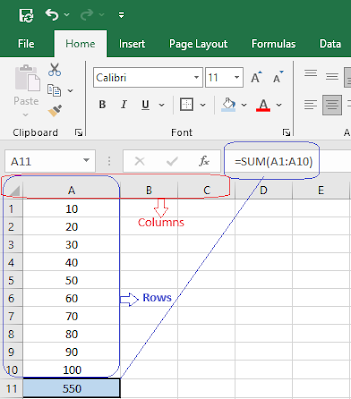Introduction
In today's data-driven world, proficiency in Microsoft Excel is a valuable skill that opens doors to enhanced productivity and better decision-making. Whether you're a student, a professional, or someone looking to boost your Excel know-how, understanding the Excel interface is the first step towards becoming a proficient user.
Getting Familiar with the Excel Interface
The Excel interface is your digital workspace where you'll perform various tasks, from entering data to performing complex calculations. Let's break it down step by step:
1. The Ribbon: Your Command Center
At the top of the Excel window, you'll find the Ribbon, a collection of tabs that house all the tools and functions you'll use. Each tab is organized logically, such as "Home" for common tasks like formatting, and "Formulas" for mathematical functions.
Example: To format a cell, click on the "Home" tab, select the cell, and choose your formatting options.
The Excel grid is comprised of cells, each identified by a unique combination of a letter and a number (e.g., A1, B2). Rows run horizontally, and columns run vertically. Understanding this grid structure is crucial for data entry and manipulation.
Example: To sum a column of numbers, enter "=SUM(A1:A10)" to add up cells A1 through A10.
Cell in A1
3. Formulas and Functions: The Heart of Excel
Formulas are equations you create to perform calculations. Functions are predefined formulas that simplify complex operations. Familiarizing yourself with common functions like SUM, AVERAGE, and IF will significantly enhance your Excel proficiency.
Example: Use the SUM function to add a range of cells, like "=SUM(A1:A10)".
Excel files are called workbooks, and each workbook can contain multiple worksheets. Worksheets are individual tabs within a workbook where you can separate and organize your data.
Example: Create a new worksheet by clicking the "+" button at the bottom of the Excel window.
5. Quick Access Toolbar: Customizing Your Tools
Located above the Ribbon, the Quick Access Toolbar allows you to customize shortcuts to frequently used commands. This is a powerful tool for personalizing your Excel experience.
Example: Add the "Save" command to the Quick Access Toolbar for one-click saving.
Conclusion
Mastering the Excel interface lays the foundation for proficient data management and analysis. With a solid understanding of these fundamental concepts, you'll be well-equipped to tackle more advanced Excel features.
Start exploring the Excel interface today, and stay tuned for more in-depth tutorials on Excel basics, formulas, functions, and advanced techniques here at Click2Excel! Happy Excel-ing!














No comments:
Post a Comment